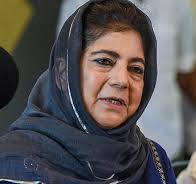Gilgit Baltistan: The Lost Identity
File Picture: Beauty of Gilgit Baltistan
By: Bharat Nanda
Introduction: Gilgit Baltistan lies between the Himalayas and the Karakoram and is surrounded by Afghanistan, China, India and Pakistan. It is of great strategic importance. Occupied by Pakistan and claimed by India, the region, which lies at the northernmost tip of Kashmir and includes parts of Ladakh, plays an increasingly important role in the security calculus of nations in the region.
Over the decades, Pakistan has repeatedly ceded parts of Gilgit Baltistan to China in return for Beijing’s help in infrastructure development and support in international forums. Under the pretext of “liberating” the region from India, Pakistan has not only turned Gilgit Baltistan into a colonial-inspired administrative entity, but also excluded the region from its constitution, deprived the people of their political, legislative, and judicial rights, and subjected them to demographic
Sectarian Divide & Identity Crisis
Gilgit Baltistan comprises of ethnic and sectarian groups that are minorities in the Pakistani state. The most populous communities have been the Shia Muslims, the Ismailis, and the Noor Bakshis, who have largely lived in peaceful harmony. Although the region’s indigenous peoples share common ethnic, linguistic, social, and cultural ties over the decades, the Pakistani state has provoked and fuelled interethnic conflict to advance its own security interests.
Zia Ul Haq started Islamization efforts which also included the abolition of the ‘state subjects’ rule in 1973, which forbade outsiders from acquiring land in the region. It was done to counter the growing sectarian consciousness of the Shias, which comprised of the majority of the population in Gilgit Baltistan. He supplemented this measure by encouraging and facilitating the immigration of Sunnis from other parts of the country to settle in the Northern Areas. The influx of non-natives into the Northern Areas gradually led to the destruction of centuries of harmonious coexistence between the Shia and Sunni communities.
In May 1988, groups of Sunni zealots from the Northwest Frontier Province (NWFP), supported by locals, raided Shia villages on the outskirts of Gilgit, killing many. These attacks were followed by other violent incidents against Shias in 1990, 1992, 1993, 2001, and 2005. These events and the violence have created a sectarian divide between the small part of PoJK and Gilgit Baltistan, with a majority Sunni population in PoJK and a majority Shia population in Gilgit Baltistan. While the parties in PoJK want to merge Gilgit Baltistan with them, the people of Gilgit Baltistan want to reunite with Bharat because of its fraternal treatment in Pakistan.
In 2009, the Pakistan People’s Party (PPP) under President Asif Zardari issued the Gilgit Baltistan Order, which stated that the region would remain part of the Northern Areas as Gilgit Baltistan. The Order was later revoked and replaced by the 2018 Order when the government led by Shahid Khaqan Abbasi introduced the Order after the announcement of the China-Pakistan Economic Corridor (CPEC) in December 2013, which abolished the legislative powers of the elected assembly in Gilgit-Baltistan. The 2018 ordinance ensured that real authority rested with none other than the country’s prime minister. The earlier assertion that the council, headed by the prime minister, had primary authority was abandoned. The 2018 decree ensured that the region has no control over roads or highways, as it is the starting point of CPEC, and that highways remain under the exclusive jurisdiction of the government. It also removed taxation powers, which increased the region’s financial dependence on Islamabad.
Reportedly, since January 2001, the old population ratio of 1:4 (non-natives to natives) has changed to 3:4. In areas once dominated by Shia, such as Skardu and Gilgit, the non-Shia population continues to increase. The Pakistani administration has sought to change the demographic profile of Pakistan-occupied Gilgit Baltistan and make the indigenous population a minority. In the Gilgit and Skardu areas, large tracts of land have been given to non-natives. Other outsiders have purchased substantial stretches of land because they are economically better off than the locals. The rapid settlement of Punjabi and Pashtun outsiders has created a sense of acute insecurity among the locals.
Conclusion
Pakistan’s obsession with Kashmir is a testament to its desire for territorial conquest and not to fulfil the aspirations of its people. The fact that it chose to invade Kashmir rather than wait for the people to decide its future proves that its reasoning about “respecting the will of the people” was not very valid to begin with. Its seven-decade-long efforts to dilute the population and extract maximum benefits from the land of Gilgit Baltistan are proof of its evil intentions.
It is important for India to engage with the people of Gilgit Baltistan and the nationalist groups that expect moral support from India. If India reaches out to these groups, it is likely that more voices will rise in support of Gilgit Baltistan’s reunification with India—a viewpoint that has gained traction recently despite Pakistan’s efforts to suppress the voices. It is also important that New Delhi work to draw international attention to the atrocities in Gilgit Baltistan. By highlighting the situation in Gilgit Baltistan, India will not only give a voice to the people of the region, but also shine a light on the larger region of Kashmir, which seems to have been forgotten by everyone.
Bharath Nanda is a Geopolitical Analyst and IT Entrepreneur based out of Jammu.
NC, Farooq Abdullah should clarify stand on Dalut’s Article 370 claim: Mehbooba Mufti
Jammu:PDP supremo Mehbooba Mufti on Monday demanded the NC and its president Farooq Abdull…











